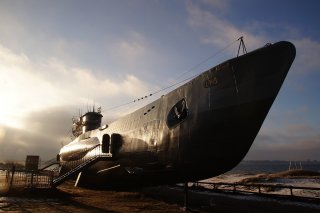A Blimp vs. a Nazi Submarine: The Crazy World War II Battle History Forgot
Attacking a submarine with a blimp may have been foolish. But, in a broad sense, it achieved its purpose; neither the tanker nor the freighter was attacked afterward. U-134 was later damaged and sunk along the coast of Spain – this time, by a regular aircraft.
In December 1941, following Pearl Harbor, the United States was unexpectedly and unpreparedly thrust into the Second World War against Nazi Germany, Fascist Italy, and Imperial Japan. This turn of events was excellent from the perspective of the Allied cause; the United States possessed a large population, an enormous manufacturing base, and a safe location across the Atlantic that was essentially immune to direct German attack. However, the great distance between America and Europe also left American shipping to Britain vulnerable to German U-Boat attacks.
Prior to Pearl Harbor, Nazi Germany had found itself constrained in its tactics against the neutral United States. While the U.S. Navy and German U-Boats had engaged before, these engagements were generally the exception rather than the rule. With America in the war, however, such restraint was no longer necessary. What followed was the “Second Happy Time,” a seven-month period during which more than six hundred Allied ships were sunk at a cost of only twenty-two U-Boats.
Over the course of 1942, the Allies’ tactics improved. Advances in detection technology, convoy organization, and countermeasures helped to stem the threat from the U-Boats. The Allies began to use aircraft to watch the seas for the submarines, and in 1942, the U.S. Navy began to use blimps for this purpose. 134 K-class blimps were constructed by rubber giant Goodyear and were mostly used for submarine detection in tropical areas where winter weather was not a problem, such as the Bahamas. It was in the Bahamas where the one American blimp lost during the war was shot down.
On July 18, 1943, U.S. Navy blimp K-74 spotted a German submarine, U-134, in the Straits of Florida. At this point, a standard procedure called for the blimp to stay back and harass the U-Boat until reinforcements arrived. However, seeing U-134 heading for a nearby tanker and freighter, K-74’s commander, Lieutenant Nelson Grills, decided to directly attack the sub. At 250 yards, the blimp opened fire with its two .50 caliber machine guns and dropped two depth charges in the water, both of which failed to damage the submarine.
After recovering from the confusing spectacle of being attacked head-on by a blimp, U-134 responded in kind with its deck guns, quickly destroying K-74’s engine and puncturing its balloon. As the submarine sailed away, the blimp sank; of the eight crew members, seven were safely rescued the following day, though one was lost to a shark attack. The abandoned blimp’s wreckage was entered and photographed by U-134’s sailors, although all confidential materials had already been discarded.
Attacking a submarine with a blimp may have been foolish. But, in a broad sense, it achieved its purpose; neither the tanker nor the freighter was attacked afterward. U-134 was later damaged and sunk along the coast of Spain – this time, by a regular aircraft.
Trevor Filseth is a current and foreign affairs writer at the National Interest.

